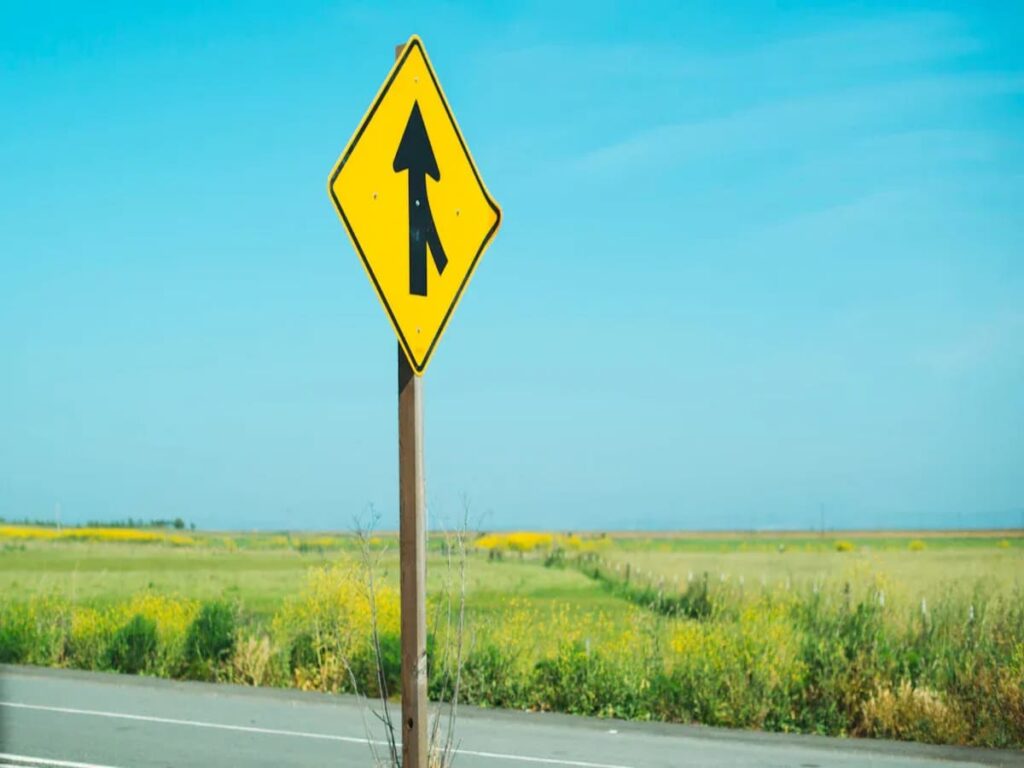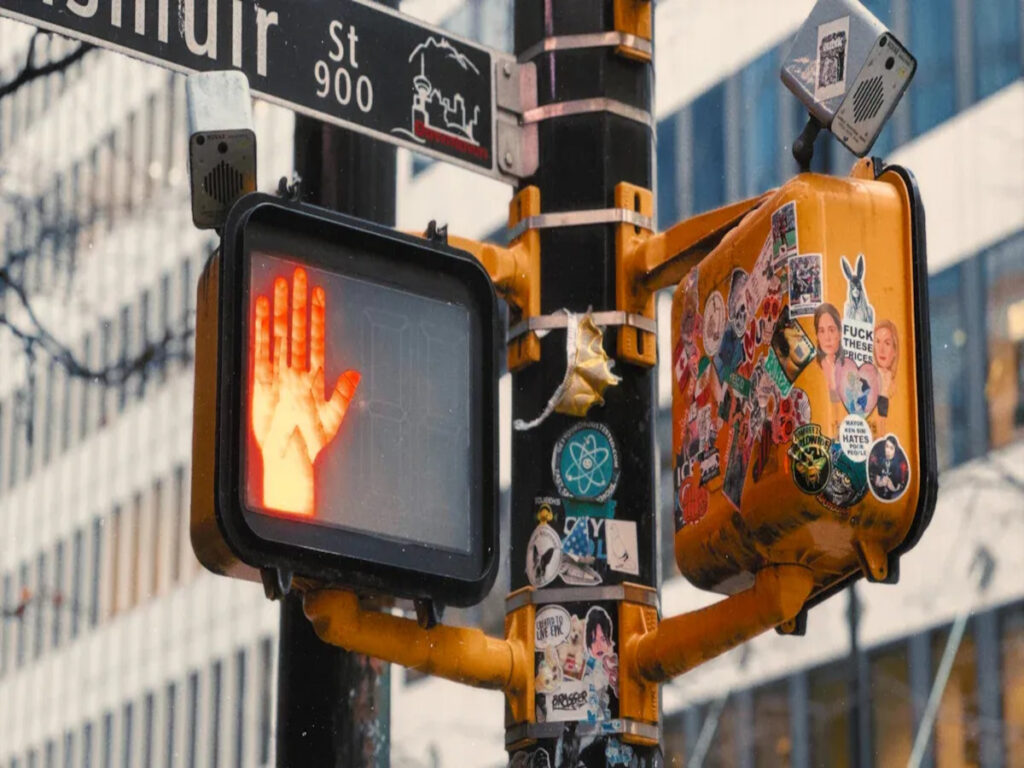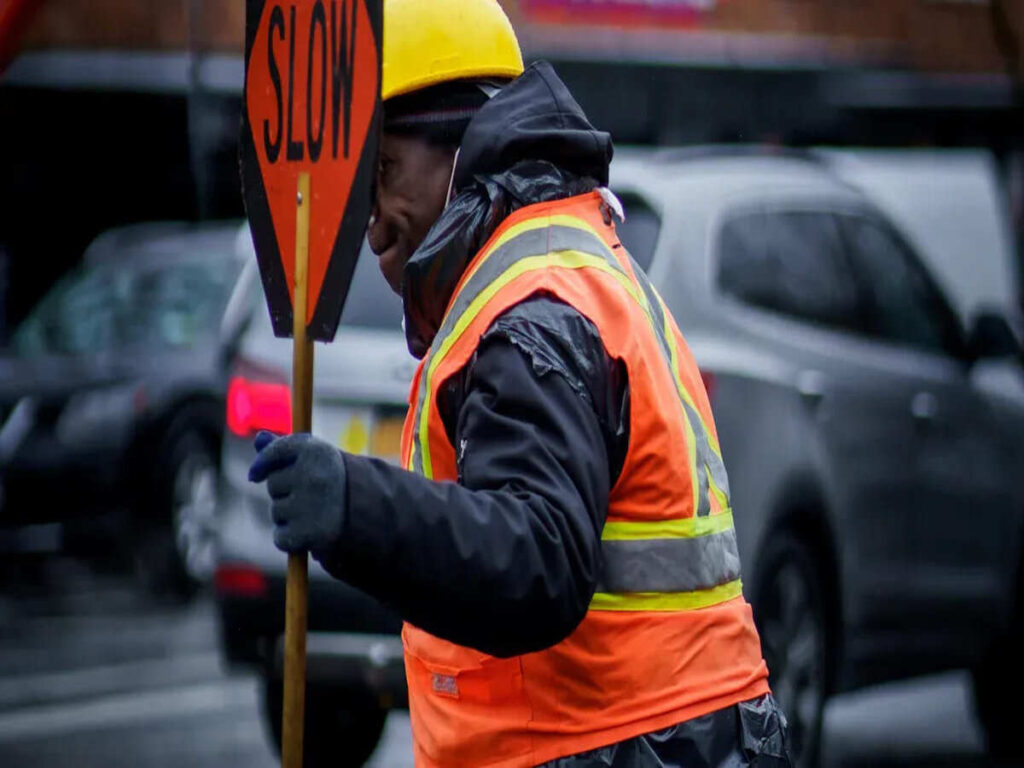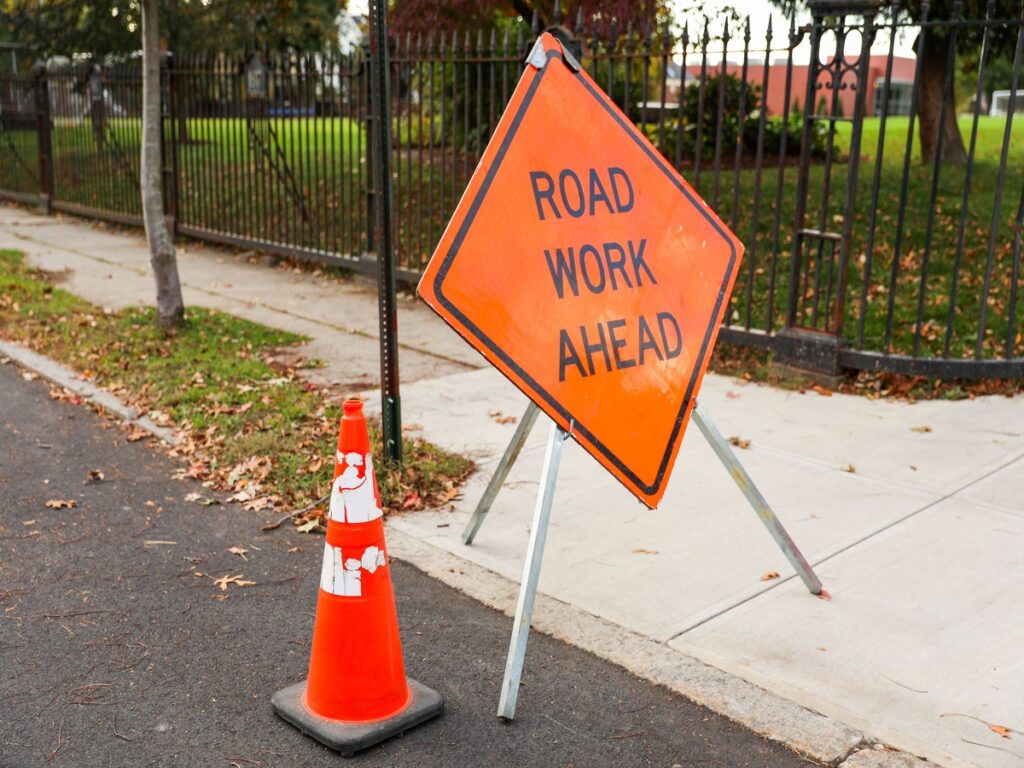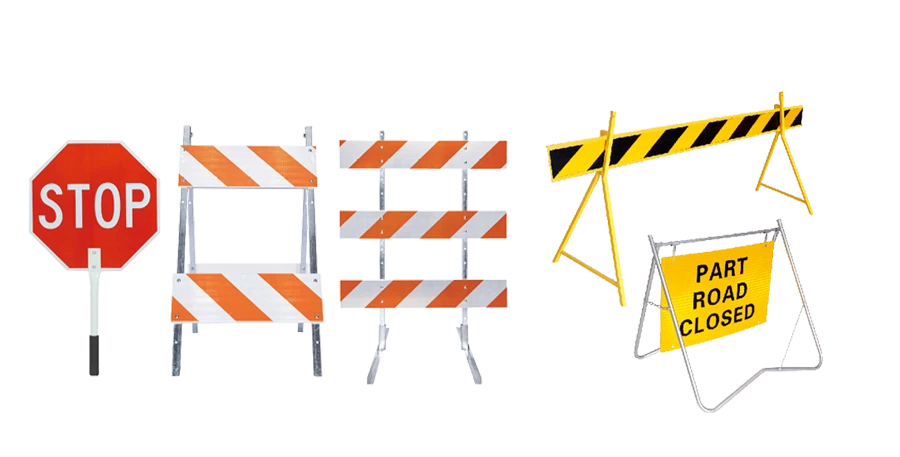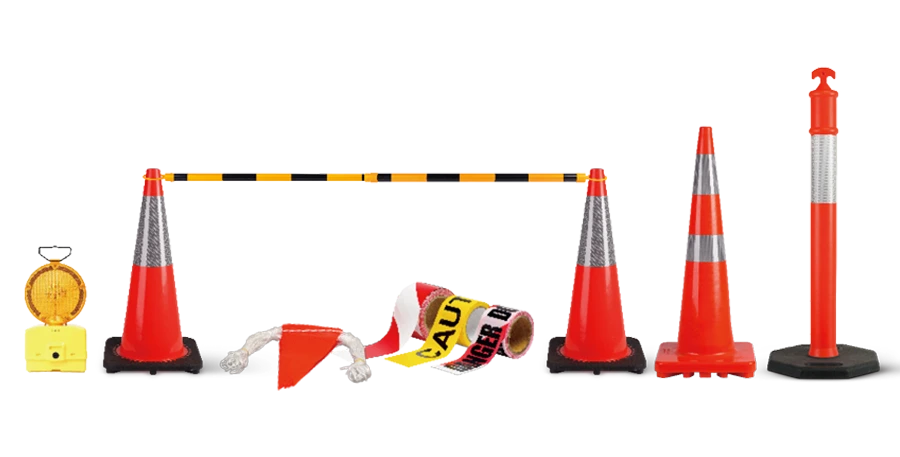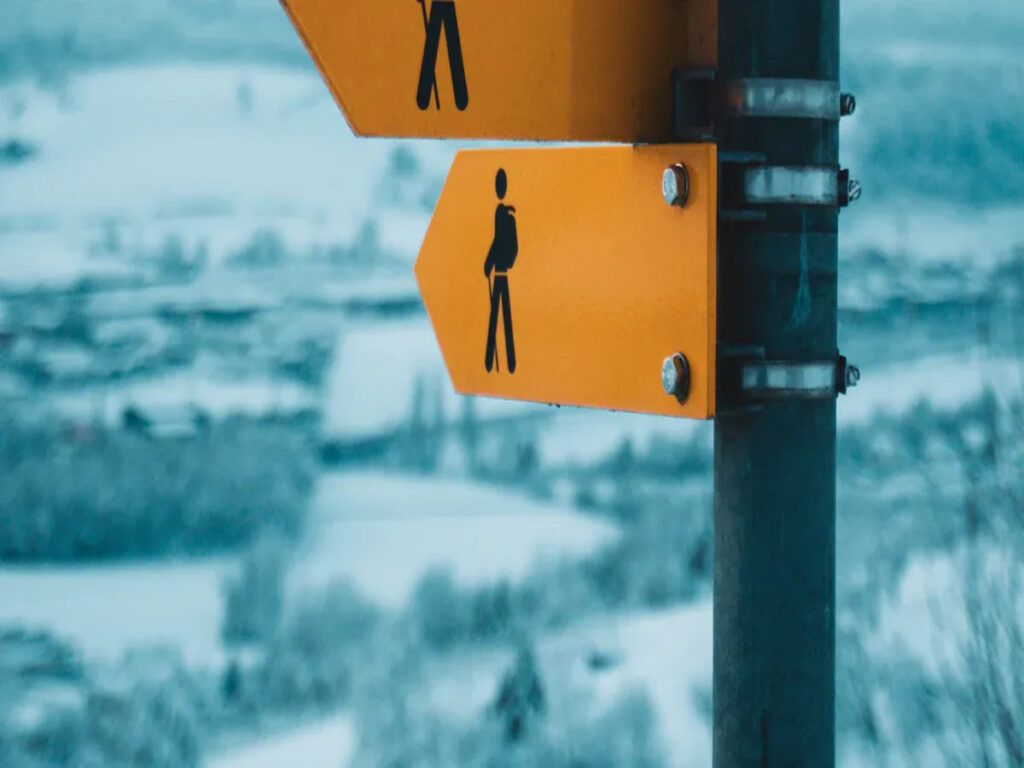
Die Auswahl des richtigen Materials für Straßenzeichenschildklammern ist entscheidend. Qualitätsklammern sorgen dafür, dass Schilder sicher bleiben und lange dauern. Minderwertige Klammern tragen sich schnell ab und können Schilder schwer zu erkennen machen. Aluminium, Stahl, und Plastik bieten jeweils unterschiedliche Stärken und Kosten. Aluminium ist leicht und rostbeständig, Es zu einer dauerhaften Wahl machen. Stahl ist extrem stark, erfordert aber eine Schutzbeschichtung, um Rost zu vermeiden. Kunststoff ist kostengünstig und für kurzfristige Beschilderung geeignet. Die Auswahl des besten Materials hängt von der erforderlichen Festigkeit ab, Umweltbedingungen, und die spezifische Art von Zeichen.
Entdecken Sie, welche Zeichenklasse am besten für Ihr Projekt funktioniert in unserem Blog: Straßenzeichenschildklammern: Top -Typen und am besten verwendet. Wir brechen Verkehrszeichen -Klammertypen und ideale Anwendungsfälle ab, mit denen Sie mit Vertrauen wählen können.
Key Takeaways
- Aluminiumhalterungen sind leicht, Rust nicht, und leiden im Freien. Sie sind einfach aufzubauen und brauchen wenig Pflege.
- Stahlhalterungen sind die stärksten und halten schwere oder viele Zeichen. Sie brauchen spezielle Beschichtungen, um Rost zu stoppen, und müssen häufig überprüft werden.
- Plastikklammern kosten am wenigsten und arbeiten für kurzfristige Zeichen. Aber sie halten nicht lange an und können bei schlechtem Wetter brechen oder verblassen.
- Die Auswahl der richtigen Halterung hängt davon ab, wo sich das Zeichen befindet, das Wetter, und wie lange wird es aufbleiben.
- Aluminium ist das umweltfreundlichste, da es vollständig recycelt werden kann. Es schadet auch die Umwelt weniger als Stahl oder Kunststoff.
Kraft- und Gewichtsvergleich
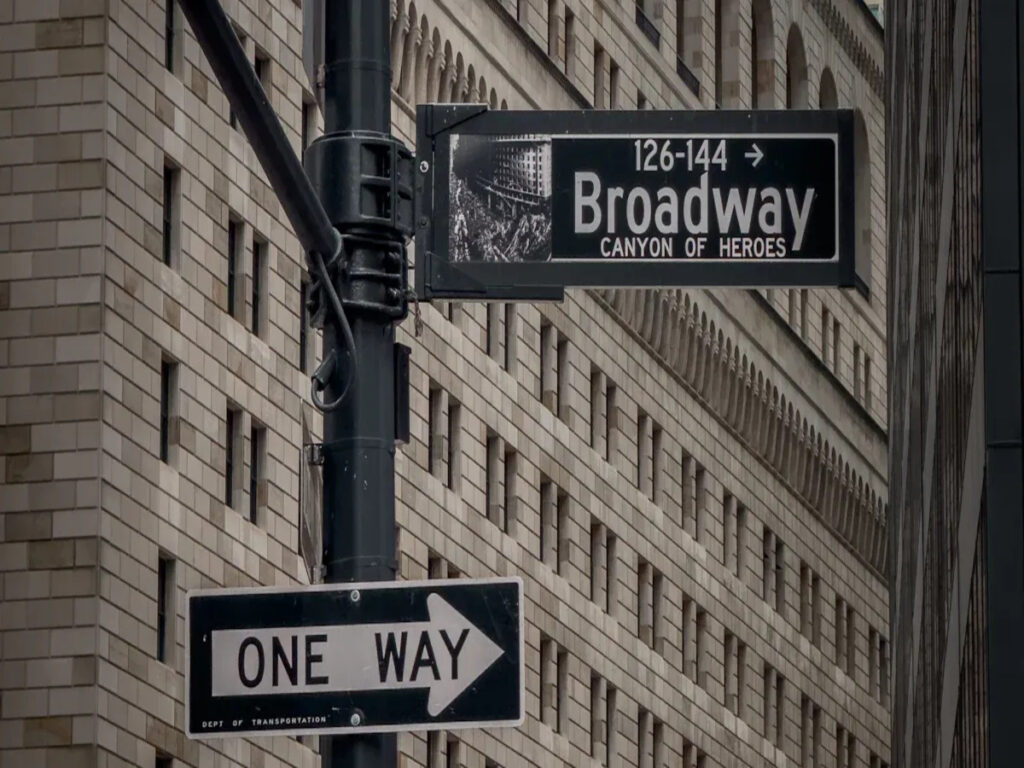
Aluminiumschildklammern
Aluminium ist stark, aber auch leicht. Es kann die meisten Straßenschilder halten, ohne sich zu biegen oder zu brechen. Das leichte Gewicht erleichtert es einfach zu installieren, Arbeitern helfen, es zu vermeiden, müde zu werden. Es übt auch weniger Druck auf Pole und Hardware aus. Aluminium eignet sich hervorragend für mittelschwere Zeichen, Wie in Städten. Es funktioniert gut, wo Kraft und einfaches Handling wichtig sind.
Eine weitere gute Sache an Aluminium ist seine Stärke, obwohl es leicht ist. Dies macht es perfekt für den langfristigen Gebrauch, wenn Sie etwas Starkes, aber nicht Schweres benötigen. Viele Aluminiumhalterungen haben spezielle Kanäle, die sie stärker machen. Diese Kanäle verbreiten das Gewicht gleichmäßig, Helfen Sie der Klammer, unter verschiedenen Bedingungen robust zu bleiben.
Stahlschildklammern
Stahlhalterungen sind die stärkste Wahl für Straßenschilder. Sie eignen sich am besten, um große oder mehrere Zeichen zu halten. Stahl bleibt auch an windigen Orten oder geschäftigen Bereichen stark. Aber Stahl ist schwerer als Aluminium, Das macht es schwieriger zu installieren. Möglicherweise benötigen Sie stärkere Stangen oder spezielle Werkzeuge, um das zusätzliche Gewicht zu bewältigen.
Stahlhalterungen benötigen Beschichtungen wie Galvanisierung, um Rost zu stoppen. Diese Beschichtungen helfen ihnen, länger zu dauern und draußen gut zu arbeiten. Stahlhalterungen haben oft harte Kanäle für zusätzliche Unterstützung. Wenn Sie an einem Ort mit schlechtem Wetter oder viel Verkehr sind, Stahlhalterungen sind die zuverlässigste Option.
Plastikschildklammern
Plastikklammern sind leicht und billig, sie für vorübergehende Zeichen gut machen. Sie sind nicht so stark wie Aluminium oder Stahl, aber einfach zu bedienen. Kunststoff eignet sich gut für kurzfristige Bedürfnisse, Wie Ereignisschilder oder Privateigentum Marker.
Plastikklammern leisten bei schlechtem Wetter nicht gut. Sie können sich beugen, Riss, oder in Sonnenlicht oder extremer Hitze verblassen. Auch mit diesen Problemen, Plastik ist eine gute Wahl, wenn Kosten und Gewicht am wichtigsten sind. Ihr Lichtdesign macht sie einfach zu tragen und aufzustellen, Zeit und Mühe sparen.
Korrosionsbeständigkeit
Aluminiumhalterungen
Aluminiumhalterungen widerstehen Rost sehr gut, Sie für den Außenbereich hervorragend machen. Wenn er Luft ausgesetzt ist, Aluminium erzeugt eine Schutzschicht. Diese Schicht stoppt Rost und hält die Klammer bei hartem Wetter stark. Aluminium funktioniert an Orten mit Regen gut, salzige Luft, oder hohe Luftfeuchtigkeit.
Weil Aluminium leicht ist, Es gibt keine Vorzeichenrahmen. Sein Rostbeständigkeit bedeutet weniger Unterhalt, benötigt wird. Aluminiumhalterungen eignen sich perfekt für nasse Bereiche oder Orte, an denen Haltbarkeit am wichtigsten ist.
Optraffic bietet eine breite Palette hochwertiger Aluminium-Straßenschildklammern, gebaut, um harten Wetterbedingungen standzuhalten, ohne die Kraft oder das Aussehen zu beeinträchtigen. Egal, ob Sie in Küstenumgebungen arbeiten, feuchte Zonen, oder einfach nur eine langfristige Zuverlässigkeit wollen, Die Aluminiumlösungen von Optraffic bieten sowohl Leistung als auch Seelenfrieden.
Stahlhalterungen
Stahlhalterungen sind sehr stark, brauchen aber Beschichtungen, um Rost zu vermeiden. Beschichtungen wie Galvanisierung schützen Stahl vor Rosten. Jedoch, Schlechtes Wetter kann diese Beschichtungen im Laufe der Zeit abnutzen. Zum Beispiel:
- Luftfeuchtigkeit über 60% beschleunigt den Schaden von Beschichtungen.
- Salz in Küstenluft macht Stahl schneller rost.
- Saurer Regen und Verschmutzung können die Schutzschicht schädigen.
Unter guten Bedingungen, Stahlhalterungen können bis zu 50 Jahre. An härteren Orten, Wie in der Nähe des Ozeans, Sie können nur 10 bis 20 Jahre dauern. Regelmäßige Pflege und Wiederbeschichtung können ihnen helfen, länger zu dauern. Stahlhalterungen eignen sich am besten für schwere Schilder in windigen oder industriellen Gebieten.
Plastikklammern
Plastic Street -Namensschild -Klammern rosten nicht, weil sie kein Metall haben. Aber sie können verblassen, Riss, oder Biegen Sie bei Sonnenlicht oder extremem Wetter. Heiße oder kalte Temperaturen können sie auch im Laufe der Zeit schwächen.
Auch mit diesen Problemen, Plastikklammern sind gut für kurzfristige Zeichen. Sie sind leicht, Einfach einrichten, und erschwinglich für vorübergehende Projekte.
| Studientitel | Ziel | Verfahren | Ergebnisse |
|---|---|---|---|
| Korrosion von fünf Klammertypen | Vergleichen Sie Rost in fünf Halterungen Marken | Getestete Klammern im gefälschten Speichel | Foffene Eisenniveaus, Nickel, und andere Metalle veröffentlicht |
| Auswirkungen von Lebensmittelsäuren auf Stahlklammern | Studienrost durch saure Lebensmittel verursacht | Eingeweichte Halterungen im Zitronensaft, Essig, und Soda | Gefunden Rostspiegel basierend auf verschiedenen Säuren |
| Galvanische Korrosion in geformten Klammern | Korrosion in geformten Klammern untersuchen | Getestete Klammern in Milchsäure | Gemessene Korrosion unter kontrollierten Bedingungen |
Kostenanalyse
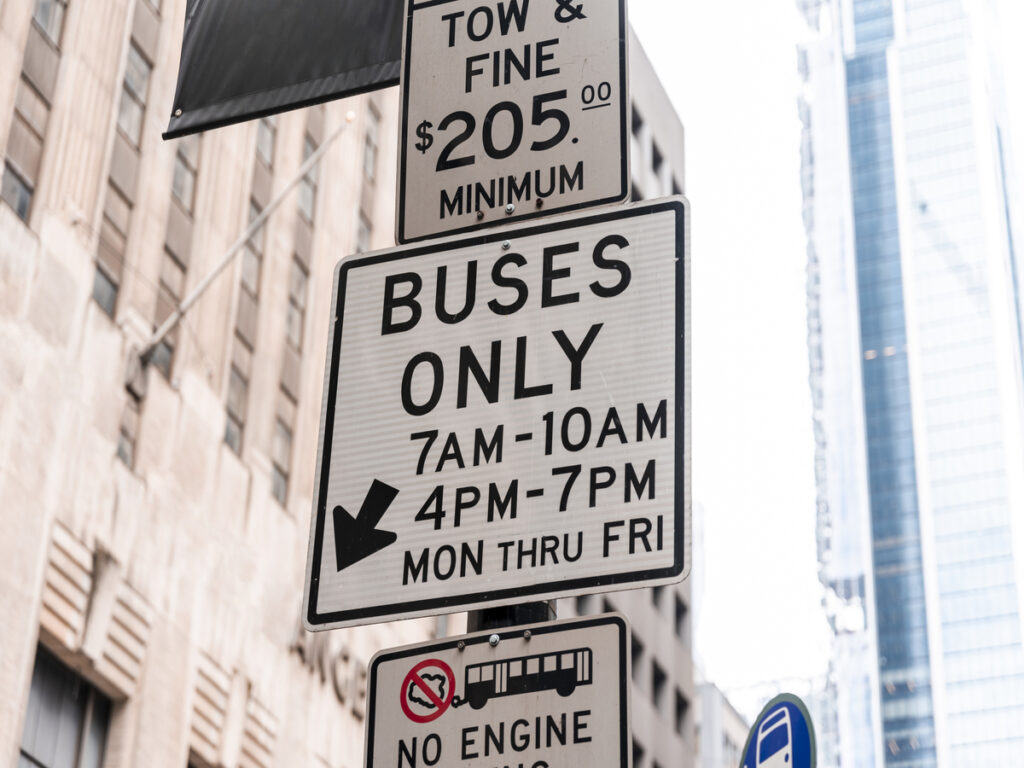
Aluminiumhalterungen
Aluminiumhalterungen sind stark und günstig. Sie beinhalten sie ein Setup, Bearbeitung, und Materialkosten. Die Einrichtungskosten reichen von reichen von $50 Zu $200 pro Stunde. Dies hängt davon ab, wie komplex die Tools sind. Bearbeitungskosten sind $30 Zu $150 pro Stunde, Basierend auf Entwurfsschwierigkeiten. Aluminiumkosten $2 Zu $6 pro Pfund, Abhängig von der Legierung. Ein einfaches 6061 Aluminiumhalterung kostet normalerweise $30 Zu $100 jede.
Der endgültige Preis hängt vom Design ab, Chargengröße, und Genauigkeitsbedürfnisse. Aluminiumhalterungen eignen sich hervorragend für langfristige Verkehrssicherheitsschilder. Sie sind leicht, Die Installation kostet also weniger und belastet die Pole nicht. Wenn Sie rostfreie und langlebige Klammern benötigen, Aluminium ist eine kluge Wahl.
| Kostenkomponente | Beschreibung | Kostenbereich |
|---|---|---|
| Einrichtungskosten | Tool -Setup- und Programmierkosten. | $50 – $200 pro Stunde |
| Bearbeitungsgebühren | Kosten für Maschinenteile basierend auf dem Design. | $30 – $150 |
| Materialkosten | Der Aluminiumpreis hängt vom Alloy -Typ ab. | $2 – $6 pro Pfund |
| Gesamtkosten für die Klammer | Kosten für eine Basis 6061 Aluminiumhalterung. | $30 – $100 pro Teil |
| Faktoren, die den Preis beeinflussen | Beinhaltet Design, Chargengröße, und Genauigkeit. | N / A |
Stahlhalterungen
Stahlhalterungen kosten mehr, weil sie schwer und stark sind. Die Preise hängen von den verwendeten Stahltyp und Beschichtungen ab. Verzinkter Stahl kostet mehr, dauert aber bei schlechtem Wetter länger. Pulverbeschichteter Stahl Fügt Rostschutz hinzu, Erhöhen Sie den Preis weiter.
Das Gewicht von Stahl macht die Installation schwieriger und teurer. Möglicherweise benötigen Sie stärkere Stangen oder spezielle Werkzeuge, die Kosten hinzufügen. Auch mit höheren Preisen, Stahl ist ideal für harte Bereiche. Es ist stark und dauert lange, das Geld wert machen. Für große Zeichen oder hartes Wetter, Stahl ist eine gute Investition.
Plastikklammern
Plastikklammern sind die günstigste Option für Schilder. Sie sind kostengünstig zu machen, Sie eignen sich also gut für den kurzfristigen Gebrauch. Acrylplastik ist leicht und einfach zu installieren, Arbeitskosten einsparen. Aber sie dauern nicht lange, Möglicherweise benötigen Sie häufig Ersatz. Dies kann die Kosten im Laufe der Zeit erhöhen.
Kunststoff eignet sich gut für Veranstaltungen oder Privateigentumsschilder. Wenn Sie im Voraus Geld sparen müssen, Plastik ist eine gute Wahl. Sie sind leicht und einfach eingerichtet, Zeit und Mühe sparen.
Haltbarkeit und Wartung
Aluminiumhalterungen
Aluminiumschildklammern sind stark und brauchen wenig Pflege. Sie rosten nicht, Also dauern sie lange draußen. Wenn Luft Aluminium berührt, Es bildet eine Schicht, die Rost stoppt. Dies macht es großartig für Orte mit Regen, salzige Luft, oder hohe Luftfeuchtigkeit.
Diese Straßenschildklassen bleiben im Laufe der Zeit stark. Sie beugen sich nicht, Riss, oder Warp, Auch mit schweren Zeichen. Viele Aluminiumhalterungen haben spezielle Designs, um das Gewicht gleichmäßig zu verteilen. Dies hält die Zeichen jahrelang stetig und sicher.
Die Reinigung von Aluminiumklammern ist einfach. Wischen Sie sie mit einem feuchten Tuch ab, um Schmutz zu entfernen. Im Gegensatz zu Stahl, Sie brauchen keine Beschichtungen oder regelmäßige Rostprüfungen. Wenn Sie eine starke wollen, Wartungswartungsoption, Aluminiumhalterungen sind eine großartige Wahl.
Stahlhalterungen
Stahlhalterungen sind sehr stark und gut für schwere Zeichen. Sie können große Anzeichen oder viele Zeichen auf einem Stange halten. Aber Stahl braucht mehr Sorgfalt als Aluminium, um lange zu dauern.
Stahlhalterungen benötigen Beschichtungen wie Galvanisierung, um Rost zu stoppen. Diese Beschichtungen schützen sie vor Wasser und anderen Schäden. Im Laufe der Zeit, Die Beschichtungen können sich abnutzen, vor allem in nassen oder salzigen Gebieten. Sie müssen sie oft überprüfen und Beschichtungen erneut beantragen, um sie in gutem Zustand zu halten.
Auch bei besonders sorgfältig, Stahlhalterungen funktionieren gut an schwierigen Stellen. Ihre starken Entwürfe halten Schilder in Wind oder geschäftigen Bereichen stetig. Wenn Sie Kraft brauchen und nichts stören, Stahlhalterungen sind eine solide Wahl.
Plastikklammern
Plastikklammern sind leicht und billig, aber nicht so stark. Sie eignen sich am besten für kurzfristige oder niedrig genutzte Zeichen. Sonne, Hitze, Und schlechtes Wetter kann sie verblassen lassen, Riss, oder im Laufe der Zeit beugen.
Plastik rostet nicht, Es ist also einfach zu pflegen. Aber Sonnenlicht kann es beschädigen, Sie müssen es also möglicherweise oft ersetzen. Dies kann langfristig mehr für dauerhafte Zeichen kosten.
Für kurze Projekte oder private Zeichen, Plastikklammern sind nützlich. Sie sind leicht zu tragen und einzurichten, Zeit sparen. Aber für etwas, das dauert, Aluminium oder Stahl ist besser.
Umwelteigentum
Aluminiumhalterungen
Die Namenszeichen der Aluminium -Straße sind eine grüne Wahl für Zeichen. Sie können viele Male recycelt werden, ohne die Qualität zu verlieren. Dies macht Aluminium zu einem der umweltfreundlichsten Materialien. Es dauert lange im Freien, weil es Wasser und Rost widersteht. Weniger Ersatz bedeuten weniger Abfall und geringere Umweltschäden.
Aluminium ist auch sehr flexibel für Designs. Sie können polieren, Bürste, Oder beschichten Sie es so, dass es zu einem anderen Look passt. Dies macht Aluminiumklammern sowohl nützlich als auch attraktiv. Wenn Sie sich um den Planeten kümmern und dauerhaften Wert wünschen, Aluminium ist eine intelligente Wahl für Zeichenrahmen.
Stahlhalterungen
Stahlhalterungen sind super stark, aber weniger umweltfreundlich als Aluminium. Stahl machen, nutzt viel Energie, was die Umweltverschmutzung erhöht. Trotzdem, Stahl kann recycelt werden, Hilfe bei der Verringerung seiner Umweltauswirkungen. Wiederverwenden von Stahlschnitten für die Notwendigkeit neuer Materialien.
Stahlhalterungen benötigen Beschichtungen, um Rost zu stoppen, wie Galvanisierung oder Pulverbeschichtung. Diese Beschichtungen lassen Stahl länger halten, tragen sich aber im Laufe der Zeit ab. Möglicherweise müssen Sie sie erneut anwenden, was Arbeit und Kosten ergänzt. Stahl eignet sich am besten für große Schilder in windigen oder schwierigen Bereichen, in denen die Stärke am meisten wichtig ist.
Plastikklammern
Plastikklammern sind billig und leicht, aber nicht gut für die Umwelt. Die meisten Kunststoffe können nicht recycelt und als Müll enden. Sonnenlicht und schlechtes Wetter können Plastik abbauen, Es muss also oft ersetzt werden. Dies schafft mehr Verschwendung und schadet dem Planeten.
Kunststoff eignet sich gut für kurzfristige Zeichen oder Privateigentum Marker. Aber wenn Sie etwas umweltfreundliches wollen, Aluminium oder Stahl ist besser. Die Umweltprobleme von Plastik machen es zu einer schlechten Wahl für langlebige oder geschäftige Schilderstandorte.
Beste Verwendungszwecke für Straßenzeichenschildklassen
Aluminiumschildrahmen und Klammern
Aluminiumhalterungen eignen sich hervorragend für die langfristige Verwendung in Städten oder Vororten. Sie sind leicht, Sie sind also einfach zu tragen und zu installieren. Dies hilft den Arbeitnehmern, während des Setups müde zu werden. Obwohl sie leicht sind, Aluminiumhalterungen sind stark. Sie können Schilder halten, ohne sich unter normaler Verwendung zu bücken oder zu brechen.
Aluminium rostet nicht, Also dauert es an nassen oder feuchten Orten. Es ist perfekt für Gebiete mit viel Regen oder salzige Luft in der Nähe des Ozeans. Viele Aluminiumhalterungen haben spezielle Rillen, um das Gewicht gleichmäßig zu verteilen. Dies macht sie stabil und zuverlässig. Sie brauchen auch sehr wenig Pflege, Zeit und Geld sparen. Für Straßen, Nachbarschaften, oder mittelgroßen Gebieten, Aluminium ist eine kluge und erschwingliche Wahl.
Stahlschildrahmen und Klammern
Stahlstraßen Namensschildklammern eignen sich am besten für schwierige Stellen, an denen die Stärke am meisten wichtig ist. Sie können schwere Schilder oder mehrere Zeichen auf einem Stange halten. Das Gewicht von Stahl hilft, die Schilder in starken Winden oder geschäftigen Bereichen ruhig zu halten. Dies macht Stahl gut für Autobahnen, Fabriken, oder andere anspruchsvolle Orte.
Stahl funktioniert gut bei schlechtem Wetter und bleibt im Laufe der Zeit stark. Aber es braucht Beschichtungen wie Galvanisierung, um Rost zu stoppen. Diese Beschichtungen machen Stahl länger und brauchen weniger Pflege. Die folgende Tabelle zeigt, warum Stahl eine obere Wahl ist:
| Attribut | Beschreibung |
|---|---|
| Stärke | Stahl ist super stark, Perfekt für schwere Zeichen oder schwierige Bedingungen. |
| Stabilität | Sein Gewicht hält die Anzeichen in Wind oder Auswirkungen konstant. |
| Langlebigkeit | Stahl dauert eine lange Zeit mit weniger Unterhalt, Geld sparen. |
| Anwendung | Wird in Autobahnen und Fabriken für zuverlässige Leistung verwendet. |
| Wetterleistung | Bleibt auch bei schlechtem Wetter stark, Schilder sicher halten. |
Wenn Sie Klammern für große Schilder oder hartes Wetter benötigen, Wählen Sie Stahl. Es ist stark und die Kosten für den langfristigen Gebrauch wert.
Plastikklammern
Plastikklammern eignen sich am besten für kurzfristige oder niedrig verwendete Zeichen. Sie sind leicht und leicht zu tragen, Setup schnell und einfach machen. Plastik eignet sich gut für temporäre Zeichen, wie für Veranstaltungen oder Privateigentum.
Plastik rostet nicht, aber es kann bei Sonnenlicht oder extremer Hitze schwächer werden. Dies macht es für dauerhafte Zeichen weniger nützlich. Trotzdem, Plastik ist eine gute Wahl, wenn Sie etwas billiges und einfach zu bedienendes benötigen. Es ist perfekt, wenn es am wichtigsten ist, Geld und Zeit zu sparen.
Das beste Material für Straßennamenschildklassen abhängt, hängt von Ihren Anforderungen ab. Aluminium rostet nicht und dauert lange, Es ist großartig für Küstengebiete oder Schilder, die jahrelang wach bleiben. Stahl ist sehr stark, muss aber den Rost stoppen, das kann im Laufe der Zeit mehr kosten. Plastik ist leicht und billig, Machen Sie es für kurzfristige Zeichen oder niedrige Budget-Projekte gut.
Denken Sie an das Wetter und wie lange das Zeichen verwendet wird. Aluminium funktioniert gut an regnerischen Orten, Während Stahl am besten für Hochleistungsjobs geeignet ist. Auswählen der richtigen Kostenmischung, Stärke, und Haltbarkeit hält Ihre Straßenschilder nützlich und erschwinglich.
FAQ
1. Welches Material eignet sich am besten für den langfristigen Gebrauch im Freien?
Aluminium ist die Top-Auswahl für den langfristigen Gebrauch im Freien. Es rostet nicht, Griff schlechtes Wetter, und braucht wenig Pflege. Das leichte Gewicht erleichtert die Installation und reduziert die Belastung der Pole.
2. Sind Plastikklammern stark genug für dauerhafte Zeichen?
Plastikklammern eignen sich nicht gut für dauerhafte Schilder. Sie sind in Ordnung für kurzfristige oder niedrige Gebrauchsgebiete, können aber brechen, verblassen, oder Biege bei hartem Wetter. Für dauerhafte Stärke, Gehen Sie mit Aluminium oder Stahl.
3. Wie kann ich verhindern, dass Stahlklammern rosten??
Verwenden Sie Beschichtungen wie Galvanisierung oder Pulverbeschichtung auf Stahlklammern. Überprüfen Sie sie oft und beantragen Sie die Beschichtungen bei Bedarf erneut. Dies hält sie rostfrei und dauert länger draußen.
4. Kann Aluminiumhalterungen mit schweren Schildern umgehen?
Namenszeichen der Aluminium Street Street sind stark genug für mittelschwere Zeichen. Sie sind robust und leicht, Sie für die meisten Verwendungen zuverlässig machen. Für sehr schwere Zeichen, Stahlhalterungen sind eine bessere Wahl.
5. Welches Material ist das umweltfreundlichste?
Aluminium ist das umweltfreundlichste Material. Es ist vollständig recycelbar und hat weniger Umweltauswirkungen als Stahl oder Kunststoff. Stahl kann auch recycelt werden, braucht aber mehr Energie, um zu produzieren.
Tipp: Wählen Sie Aluminiumhalterungen, wenn Sie eine umweltfreundliche Option wünschen.


